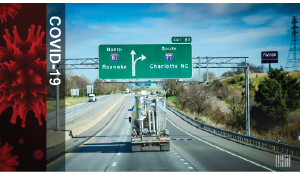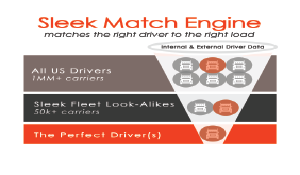


Looks Like August May See Higher Freight Volumes Than Expected
Carriers have begun to report stronger earnings than expected, contradicting expert predictions that a healthy rebound would not be seen until 2021. Multiple data sources are suggesting that volume will continue to rise throughout August as the industrial sector, along with imports, gets back to full production levels. "We moved a healthy amount of freight last week, almost 3 times more than the last week in May", said Oleg Yanchyk, Sleek Fleet CIO. "Contracted freight can't keep up with the increased demand, so Sleek Fleet is supplementing primary and preferred networks to help our shipper customers avoid the costly spot market". #SleekPOV Join our newsletter. click here
Companies Continue To Transition To New Workforce Models
Many companies have worked around the clock to transition in-office workers to remote, placing a big drain on important company resources. For example, IT had to solve for new telecommunications needs, while HR had to develop new protocols to ensure remote employees had the tools needed to remain focused and stay on task. "Sleek Fleet is unique because we are a 100% remote workplace, which requires trust and transparency between the employer and employee", said Kira Meinzer Sleek Fleet CPO. "Remote work is our way of doing business, so we were not forced to make changes as other companies have been. We are lucky because all of our resources have continued to focus on our core mission to simply logistics." Other companies are relying on a hybrid approach where high-risk employees work from home, while the rest are required to make it into the office. "Even though an employee may be physically able to go into the office, we oftentimes forget about the mental-health aspect that can sometimes take a deeper toll on the employee and his or her family", said Meinzer. "As a remote company, I'm glad we are not in a position to force any team members back into a physical location". FreightWaves recently reported that a large US broker, using the hybrid model, saw an increase in positive COVID cases amongst workers who were back in the office. To read the FreightWaves article, click here: https://freightwaves.com/news/brokerage-employees-upset-by-limited-remote-work-options-despite-covid-outbreak Join our newsletter. click here
Carriers may face penalties, shutdowns under Virginia COVID-19 regs
Recently, FreightWaves reported that the state of Virginia will soon require companies to classify employees by risk-level based on job duties. Since truck drivers are on the front lines and oftentimes require less than 6 feet of separation when picking up and dropping off freight, they will most likely be impacted. "For everyone's safety, it makes sense for employers to proactively develop a preparedness plan in case someone exhibits symptoms", said Dean Corbolotti Sleek Fleet Shipper Engagement Director. "It's still too early to understand the impact on the transportation industry. We hope there are no negative ramifications. Carriers, and shippers, have already endured so much". To learn more, here's a link to the FreightWaves article: https://www.freightwaves.com/news/carriers-may-face-penalties-shutdowns-under-virginia-covid-19-regs?utm_source=piano&utm_medium=email&utm_campaign=2630&pnespid=mPJ1q.0FAhWNFhKwQWdlcTpi4CQ99K6GItI0Lgf4 #SleekPOV Join our newsletter. click here
